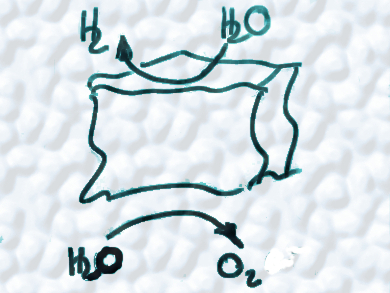Photoelectrochemical (PEC) water splitting into hydrogen and oxygen using solar energy is considered as one of the most promising pathways for renewable energy conversion. Highly active electrocatalysts are needed for this processes. Currently, Pt- and Ir/Ru-based materials are the most efficient electrocatalysts. However, large-scale application is hampered because of the high cost and scarcity of these noble metals. Ni-based hybrid nanostructures have great potential to enhance the overall electrochemical water splitting activity and stability of the active materials.
Xinliang Feng, Technische Universität Dresden, Germany, and colleagues have developed a three-dimensional (3D) hybrid electrocatalyst. It is constructed through in situ anchoring of Co9S8 nanosheets onto the surface of Ni3Se2 nanosheets vertically aligned on an electrochemically exfoliated graphene foil.
The 3D hybrid benefits from the synergistic effects between Ni3Se2 and Co9S8, the highly conductive graphene support, and its large surface area. It has superior electrocatalytic activity toward water reduction in alkaline media, featuring overpotentials of −0.17 and −0.23 V to achieve current densities of 20 and 50 mA cm–2, respectively. The remarkable activity results from the unique 3D hierarchical architecture and interface reconstruction between Ni3Se2 and Co9S8 through Ni–S bonding, which leads to charge redistribution and thus lowers the energy barrier of hydrogen desorption in the water splitting process.
Integration of the 3D hybrid with a macroporous silicon photocathode (MSi) enables highly active and sustainable sunlight-driven water splitting in both basic media and real river water. The overall water splitting with 10 mA cm–2 at a low voltage of 1.62 V is achieved using the hybrid as both anode and cathode catalysts. This surpasses that of the commercisail Ir/C–Pt/C couple (1.60 V) for sufficiently high overpotentials.
According to the researchers, the electrocatalyst may provide a new ideas for the design of efficient and robust 3D hybrid electrodes also for other electrochemical and photoelectrochemical applications, such as nitrogen fixation and CO2 reduction.
- Integrated Hierarchical Cobalt Sulfide/Nickel Selenide Hybrid Nanosheets as an Efficient Three-dimensional Electrode for Electrochemical and Photoelectrochemical Water Splitting,
Yang Hou, Ming Qiu, Gyutae Nam, Min Gyu Kim, Tao Zhang, Kejun Liu, Xiaodong Zhuang, Jaephil Cho, Chris Yuan, Xinliang Feng,
Nano Letters 2017.
DOI: 10.1021/acs.nanolett.7b01030
